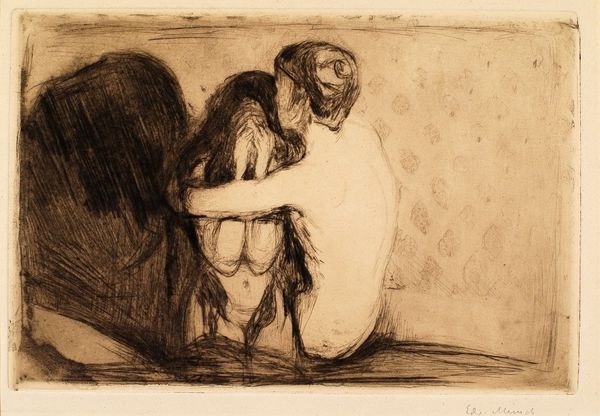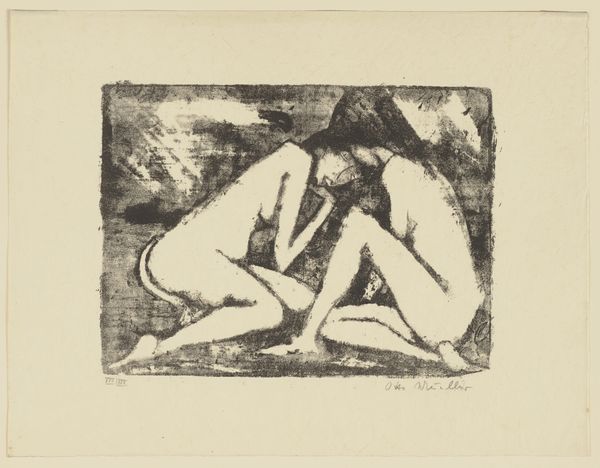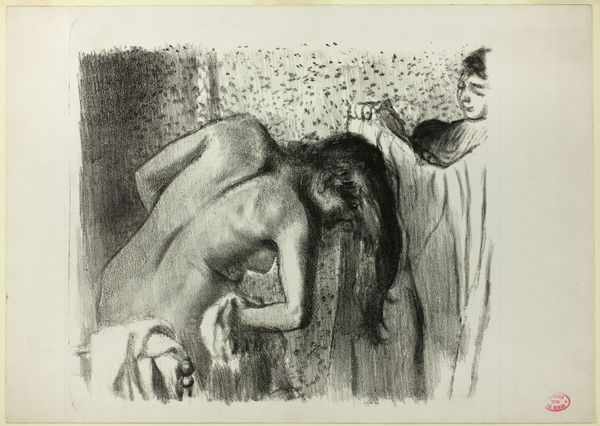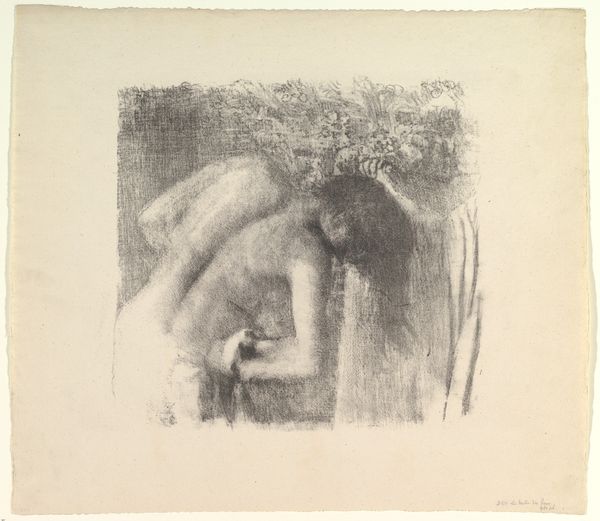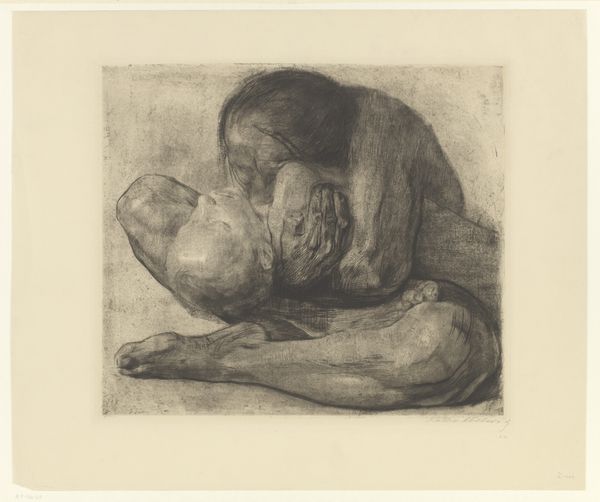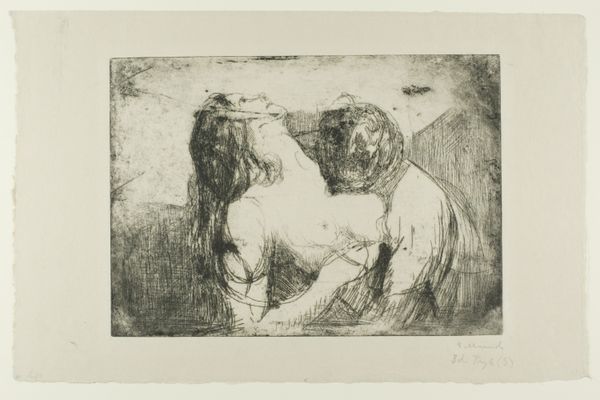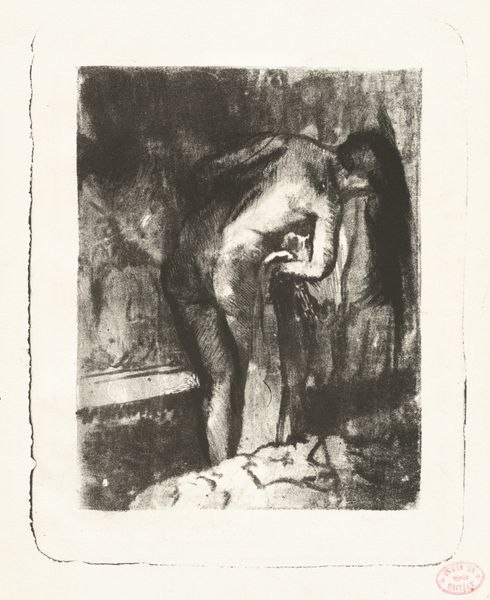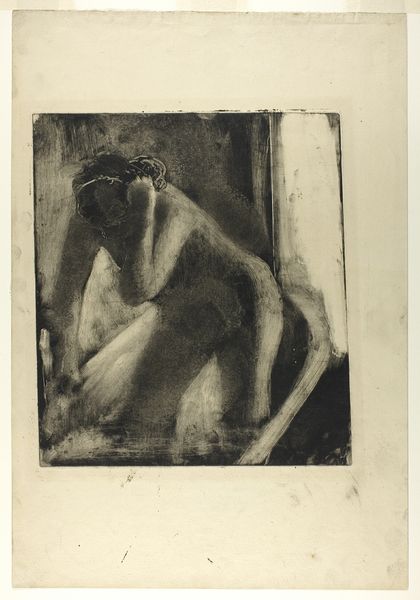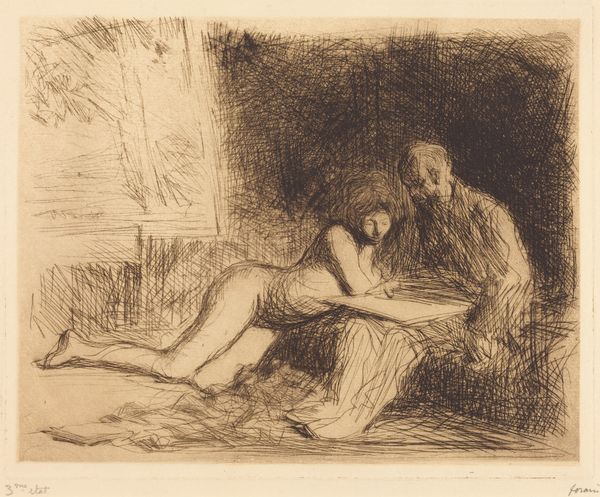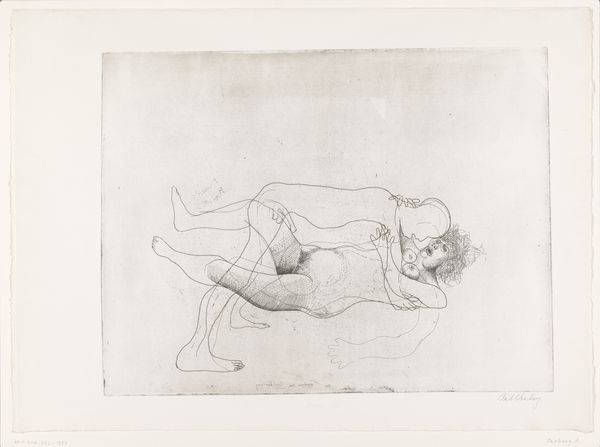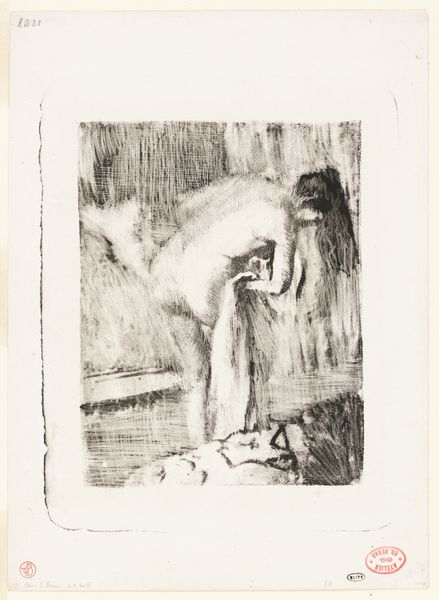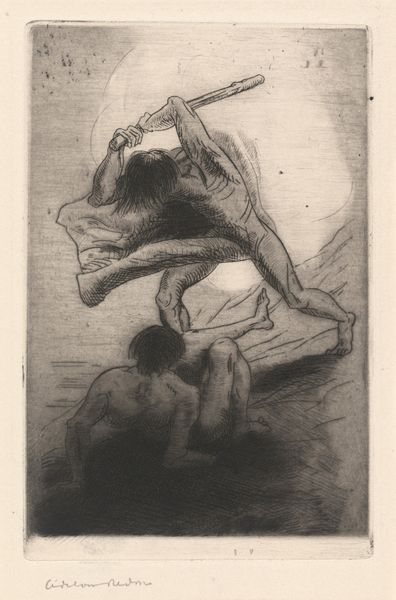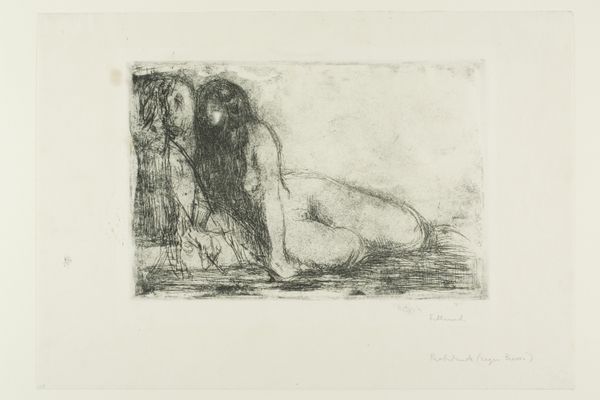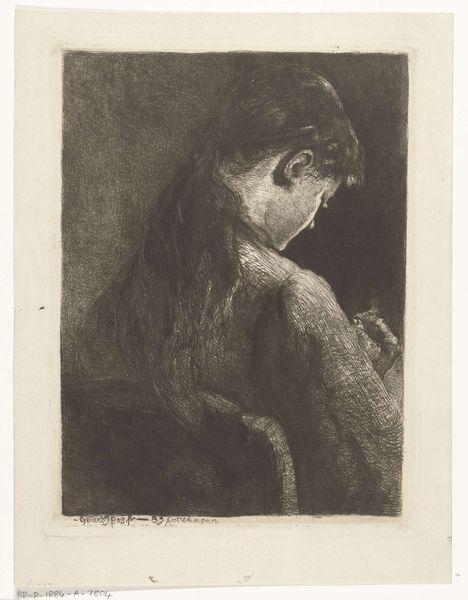
Dimensions: 20.6 x 31.1 cm
Copyright: Public domain
Curator: This etching by Edvard Munch, completed in 1894, is titled "Consolation." Editor: There's a haunting quality here. The textures, the way the figures are rendered… it conveys a profound sense of vulnerability. What exactly is going on in this picture? Curator: On a literal level, we see two female figures. One is nude, sitting with her head in her hands. She's being embraced by the other woman, who stands behind her, offering solace. I think its worth seeing this work alongside broader cultural depictions of grief and mourning during that time period. Considering, also, Munch's wider investigation into the psychosexual dynamics between men and women at the turn of the century. Editor: You know, that embrace feels deeply familiar. Think about the Pietà, or similar iconic imagery where someone is holding another. Munch seems to be invoking, even subverting, those deeply entrenched tropes about grief and intimacy. The embracing figure, too—look how their hair seems to cascade and blend into shadows, creating a kind of halo effect. Is this person a comforter, or something more, a protector perhaps? The dark shape that looms to the side. I keep returning to the question of safety and shelter. Curator: Absolutely. And what about the space? Notice how confined and indeterminate it is. The woman sits directly in the foreground, further enhancing this overwhelming sense of emotional entanglement. Considering Munch’s involvement with Symbolism, is the lack of depth and context meant to place these bodies, and thus the consoling and consoled, outside the structures that were beginning to redefine women's existence and status within the public and the private sphere? Editor: Interesting. So perhaps we should also view the domestic sphere itself as being scrutinized by Munch in this artwork. Well, I've got to say that even on a second look, that haunting feeling just won’t go away! Curator: Indeed. It's that lingering, ambiguous sense of sorrow and interconnectedness that makes this such a powerful, and, let's face it, relatable work. Editor: Very much agreed. I won't forget this piece anytime soon.
Comments
No comments
Be the first to comment and join the conversation on the ultimate creative platform.
